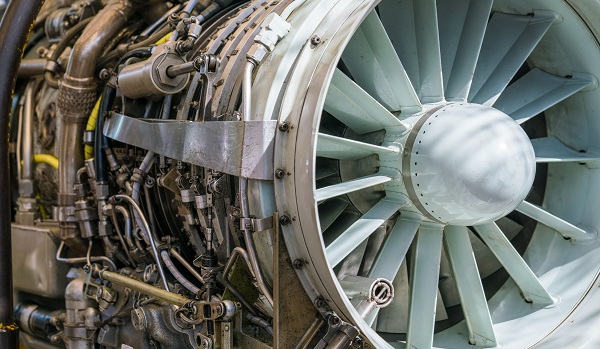Testing that Reaches the World
Aerospace Battery Testing
At Clark Testing, we understand the pivotal role that battery technology plays in revolutionizing electric propulsion systems and powering the aircraft of tomorrow. Our battery test lab is committed to ensuring the performance, reliability, and safety of aerospace batteries, enabling manufacturers to accelerate product design, development, and validation. Along with propulsion system development, Clark provides evaluation and test validation for onboard function, control and auxiliary battery systems for the aerospace industry.
Battery testing standards for the aerospace industry are crucial for ensuring the safety, reliability, and performance of batteries used in aircraft and spacecraft. Some of the key standards commonly referenced in the aerospace industry include:

RTCA/DO-311 and EUROCAE ED-312: These documents provide guidelines and requirements for the design and certification of lithium battery systems for use in aviation.
RTCA/DO-160 and EUROCAE ED-14: These standards outline environmental testing procedures for airborne equipment, including battery systems. They cover a wide range of environmental conditions such as temperature, humidity, altitude, vibration, and electromagnetic interference (EMI).
SAE ARP 6166: This Aerospace Recommended Practice (ARP) from the Society of Automotive Engineers (SAE) provides guidance on the testing and evaluation of rechargeable lithium batteries intended for use in aerospace applications.
NASA-STD-6001: This standard from NASA specifies requirements and test methods for the selection, application, and use of rechargeable lithium batteries in spaceflight systems.
ASTM F3208: This standard from ASTM International provides guidelines for the characterization and testing of lithium-ion batteries for aerospace applications, including performance, safety, and abuse tolerance.
MIL-PRF-32565: This military specification provides requirements for lithium-ion batteries used in military aerospace applications, including performance, safety, and environmental considerations.
IEC 62133-2: This international standard specifies requirements and tests for the safe operation of portable sealed secondary lithium cells and batteries, which may be referenced in aerospace battery testing.
Testing Services:
- Load Testing: Simulates a full load to measure the battery’s performance under actual operating conditions.
- Voltage Testing: Measures the voltage levels to identify weak or failing cells.
- Impedance Testing: Assesses internal resistance to predict battery life and potential failures.
- Charge-Discharge Testing: Batteries undergo repeated charge-discharge cycle test to determine the number of cycles the battery can endure while maintaining specified performance levels.
- Capacity Testing: Batteries are tested to determine their actual capacity compared to their rated capacity ensuring that the batteries meet the required energy storage specifications.
- Short Circuit Testing: Batteries are subjected to short circuit conditions to evaluate their safety features and the ability to withstand internal faults without prompting failures.
- Dielectric Testing: Dielectric testing known as high potential test, hipot test, or insulation test applies a high level of voltage to the insulation barrier and measure the reaction.
- Isolation Testing: Isolation testing ensures batteries are free from unwanted electrical connections that could lead to short circuits particularly in high-voltage applications.
- Overcharge Testing: Overcharge testing is vital, particularly for Lithium-Ion batteries, for ensuring the safe use in consumer electronics, electric vehicles, eMobility, industrial, military and other applications.
- Seismic Testing: Simulates the operating environment ensuring the battery generator, battery back-up or UPS system will operate despite the effects of an earthquake.
- Vibration Testing: Batteries are subjected to a vibration profile emulating the vibration cycle in the field of operation.
- Mechanical Shock Testing: Batteries are subjected to mechanical shocks to verify the structural integrity of the battery housing and its components.
- Destructive/Abuse Testing: Batteries are subjected to thermal runaway, drop test, penetration test and crush test to assess how batteries react to harsh conditions
- Electromagnetic Compatibility (EMC/EMI) Testing: Batteries are tested for electromagnetic emissions and interference to ensure they do not interfere with other electrical and electronic systems.
- Thermal Cycling: Batteries undergo heating and cooling cycles simulating the thermal stress determining the reaction to standard and critical operating conditions.
- Material & Chemical Analysis: Clark provides a complete profile of the elemental analysis and chemical properties of the base raw materials and battery cell.
Clark’s team of engineers and lab technicians leverage the latest advancements in instrumentation and industry expertise to conduct a comprehensive suite of tests on batteries for the aerospace industry. From thermal runaway testing to vibration and shock simulations, our protocols are meticulously designed to meet the stringent requirements of aerospace applications. Whether you're developing batteries for electric aircraft propulsion, auxiliary power units, or unmanned aerial vehicles (UAVs), our testing services deliver invaluable insights to optimize your aerospace battery systems for optimal performance and durability.
At Clark Testing, we go beyond providing testing services – we forge partnerships dedicated to our clients' success in the dynamic aerospace landscape. With our quick turnaround times and responsive customer support, we enable manufacturers to meet tight production schedules and accelerate their time-to-market. By choosing us as your testing partner, aerospace companies gain access to a trusted ally with a proven track record of delivering reliable, quality driven testing solutions.